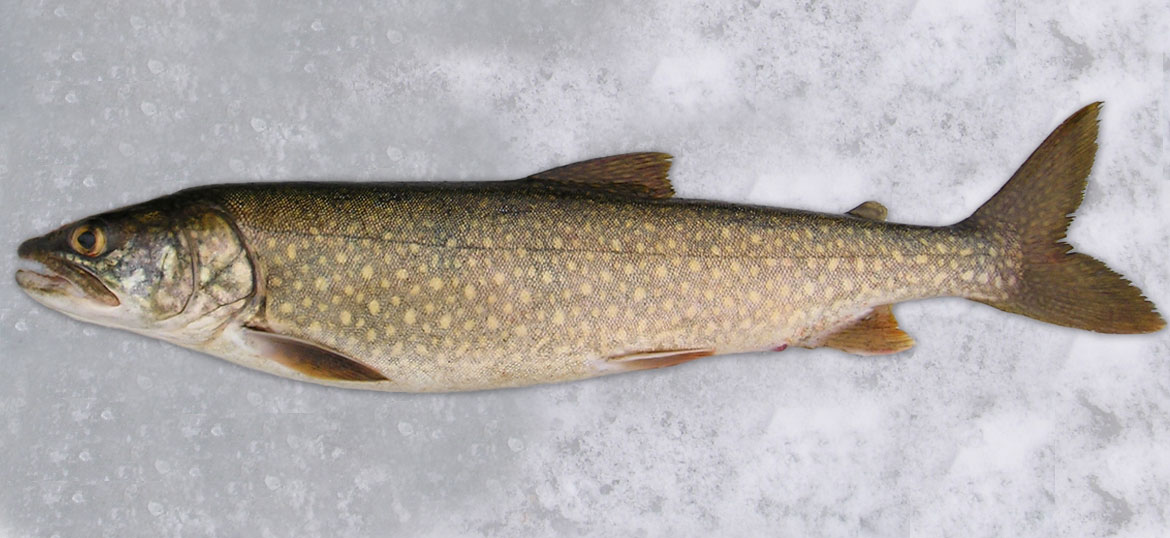
Lake Trout (Salvelinus namaycush) Salvelinus means char; namaycush is of native American origin referring to dweller of the deep. Other common names; togue, longe, Mackinaw trout, touladi.
Habitat
Lake Trout are dwellers of deep cold lakes in the southern parts of the range, and deep and shallow lakes in the northern portion of its range. Lake Trout are intolerant of waters with low oxygen content and prefer temperatures below 60°F.
Reproduction
Lake Trout spawn over rocky shoals and along wave-swept shorelines during the fall. River spawning is very rare. The males are first to arrive at the spawning areas, cleaning algae and sand from the rocky substrate at depths ranging from 1to 200 feet. A 32-inch female deposits approximately 18,000 eggs (400-1,200 eggs per pound of body weight) over 1.5 to 4 inch gravel.
Following fertilization by one or more males, the eggs are left to fall between the rocks where they incubate with no parental care. The eggs hatch 4 to 5 months later in the spring of the following year. Lake trout generally mature at age 6 to 7, but in the north it may be delayed a few years.
Diet
Following complete absorption of the yolk sac, the first food taken by the young is zooplankton. With increasing size, the diet shifts to a wide variety of aquatic and terrestrial invertebrates and eventually fish. In deep lakes where forage fish are not available during the summer, Lake Trout populations rely on zooplankton, which results in slower growth during that period.
Management
The Fish & Wildlife Department closely manages all fish populations in the state. Management methods vary for each species, but all aim to keep fish populations healthy, balanced, and productive. Management actions improve and enhance aquatic communities through implementing fishing regulations, fish stocking, nuisance species control, and habitat improvement efforts.
Most of the fishing effort directed at lake trout occurs during the winter ice fishing season, although open water season can also be productive, particularly during spring and fall.
Status
Lake Trout populations, like those of Atlantic Salmon, were severely affected by overfishing and habitat destruction during the 1800s. Populations of Lake Trout from all 25 lakes in Vermont are either augmented or totally sustained by hatchery stockings. Recent reductions in Lake Champlain sea lamprey by control efforts have led to increasing survival of stocked Lake Trout, which comprise an important fishery.
Vermont's most productive lake trout waters are found in the Northeast Kingdom. These include Caspian Lake in Orleans County, Maidstone and Seymour lakes and Lake Willoughby in Essex County. Lake Champlain also supports an excellent lake trout fishery yielding fish typically 18 to 24 inches in length.
In Vermont, specimens exceeding ten pounds are considered trophy fish.
